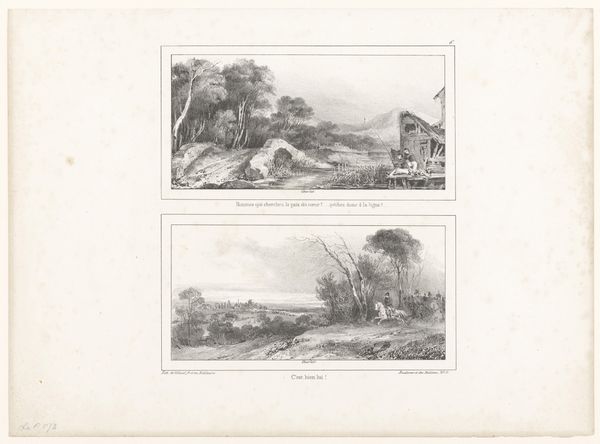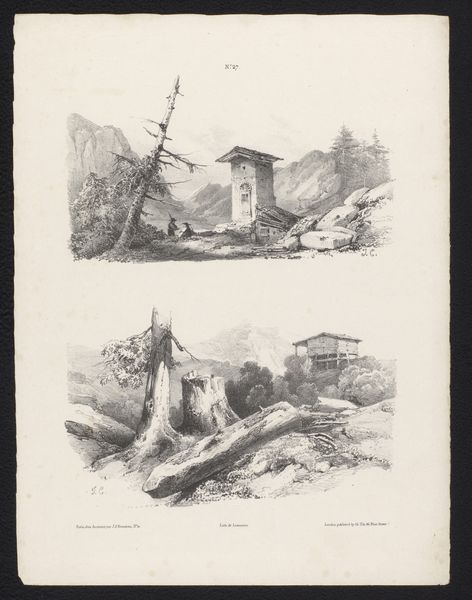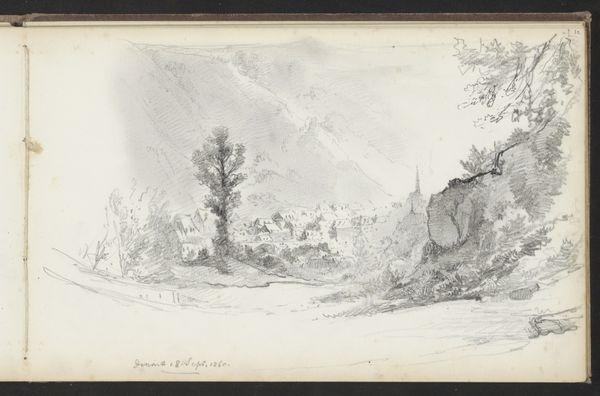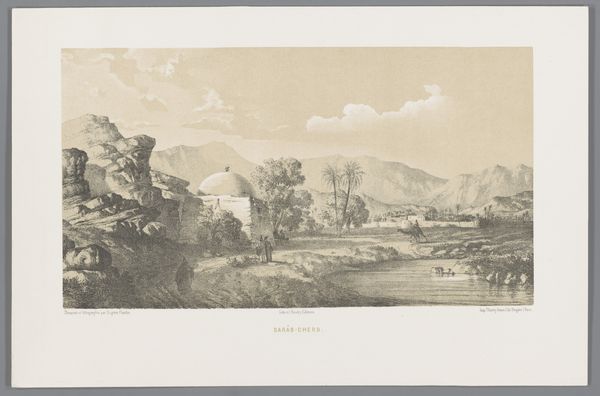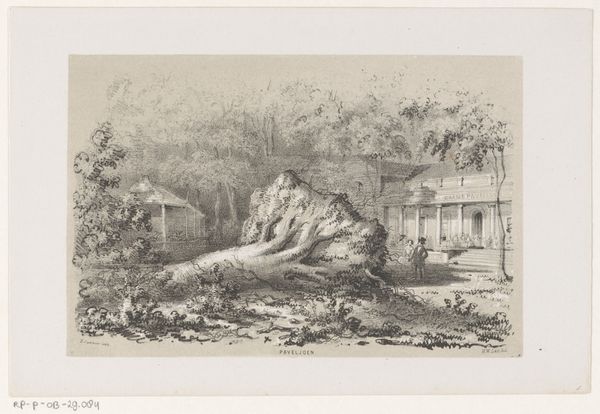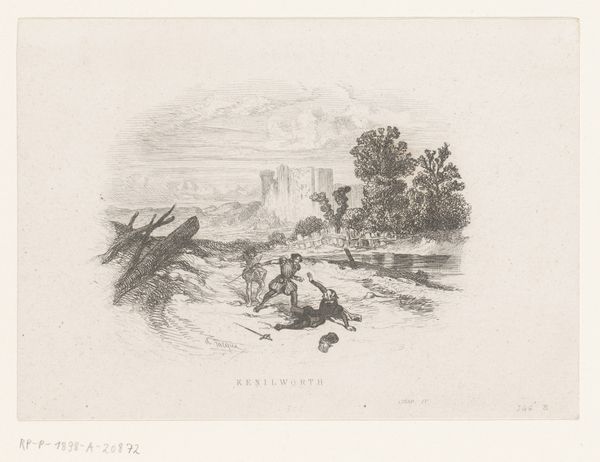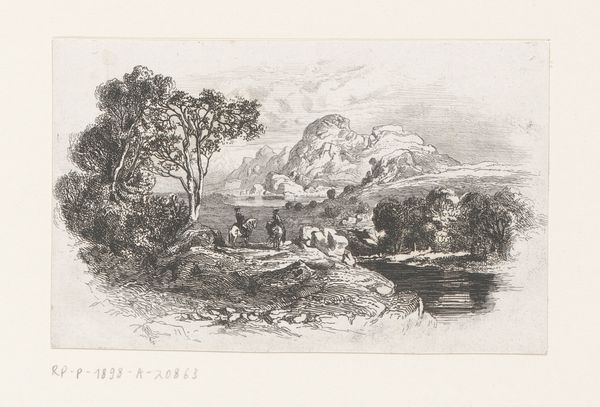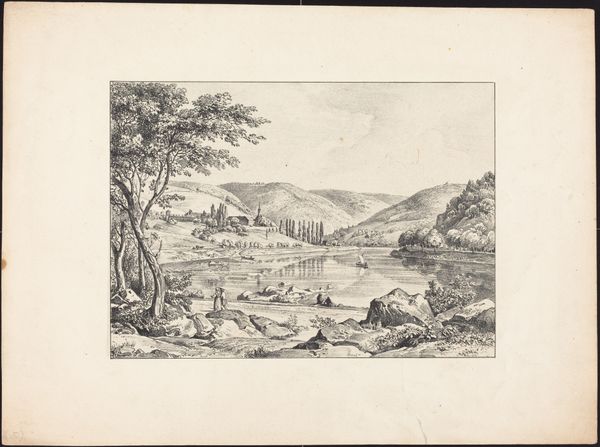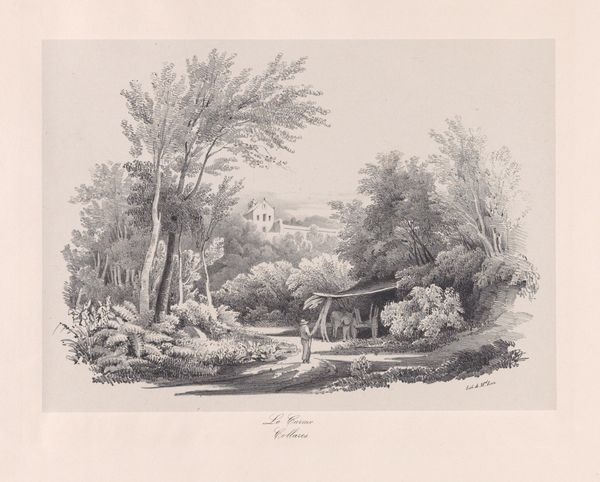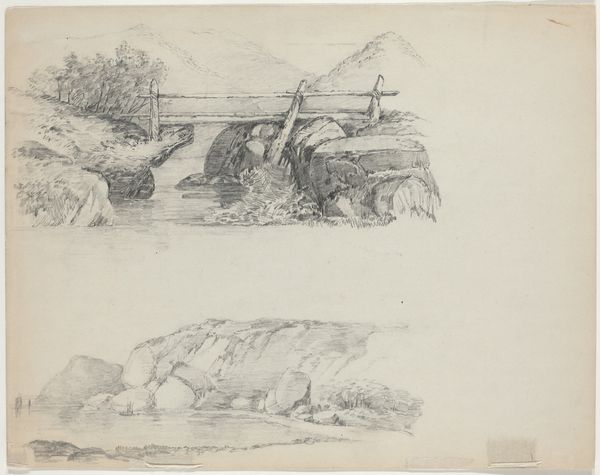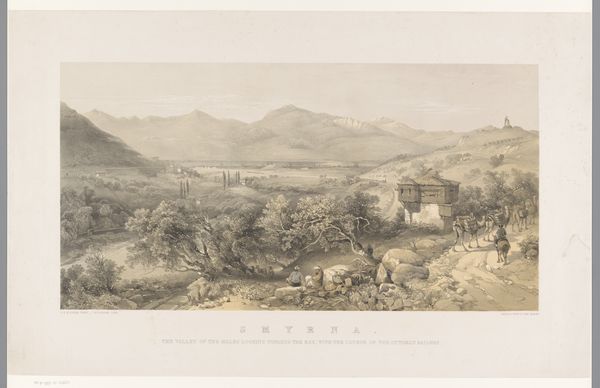
drawing, print, ink, pencil
#
pen and ink
#
drawing
#
ink drawing
# print
#
pen sketch
#
pencil sketch
#
incomplete sketchy
#
landscape
#
personal sketchbook
#
ink
#
forest
#
ink drawing experimentation
#
romanticism
#
pen-ink sketch
#
pencil
#
pen work
#
sketchbook drawing
Dimensions: height 363 mm, width 275 mm
Copyright: Rijks Museum: Open Domain
Editor: This is "Twee landschappen met een huis aan het water," or "Two landscapes with a house on the water," by Jules Coignet, created around 1831 using ink and pencil. It feels very peaceful and almost… idealized. What strikes you about these two landscape drawings? Curator: What strikes me immediately is the deliberate contrast. We see Coignet playing with different types of landscapes that were valued, particularly at that time, through the Romantic lens. The top image presents an almost idyllic scene of harmony, potentially reflecting the bourgeois desire for nature as respite. Whereas the bottom feels more enclosed, a common image in the popular illustrated journals of the period, representing the working life connected to the landscape. Does the depiction change how we view these scenes, or perhaps instruct us on how to think of class in these landscapes? Editor: So the top scene is an idealized escape, while the lower connects more to labor. Is this like the contrast we see in poetry between city and country? Curator: Yes, except visualized here in two distinct modes within the same frame. Consider also how these images might have circulated; this work would have likely been reproduced for mass consumption, subtly shaping perceptions and potentially reinforcing social hierarchies. Think of the art institutions that promoted such imagery and the collectors who acquired them. What narratives were being prioritized, and whose voices were amplified? Editor: That's fascinating! So the choice of landscapes, how they were drawn, and how they were circulated all reflect and shape society. It’s a really complex interplay. I'll definitely think about that next time I see a landscape drawing. Curator: Exactly. Seeing these not just as pretty pictures, but as cultural documents, is crucial.
Comments
No comments
Be the first to comment and join the conversation on the ultimate creative platform.
